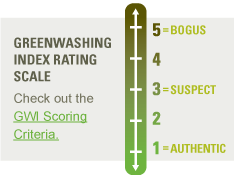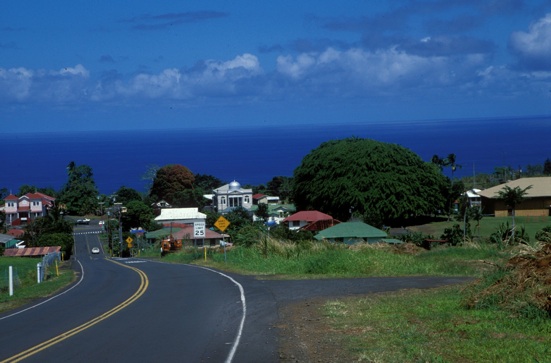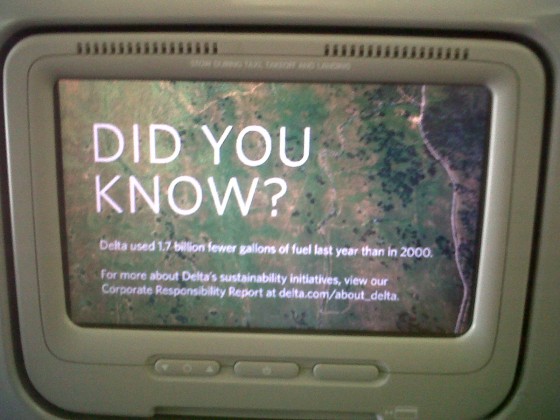The stand out piece of information I have learned so far are the lack of platforms and sources available for the population to get easy and straight forward information surrounding sustainability. Brand practices, green washing in advertising and packaging, social movements backed by companies as well as the sustainability of particular brands and products, are all important pieces of information that it takes someone to be knowledgeable about sustainable purchasing. There is yet to be a platform that condenses all of this information, informing the public on the best possible brands to stand behind to better our environment. It still seems that it takes work and the proper education for a consumer to be fully aware of what they are buying into. This is something that is a passion of mine to find, or be a part of building, because I believe it (resource availability) should start at a young age. If I knew the things I did now at a much younger age, about green washing and energy consumption/waste, the decisions I have made and the companies I chose to support would have been drastically different.
After being aware of the environmental issues of our planet that are starting to motivate companies and brands to think more “green,” there should be a source to back up and show exactly what it is that they are doing to make these changes in the environment for the better. Seeing different platforms (Green Washing Index, Good Guides, Global Reporting Initiative) and agencies (Enviromedia) that are taking initiative in educating and working with sustainable thinking corporations is wonderful but frustrating in that it still doesn’t make it easy for the average consumer to really gain the information or knowledge it takes to make smart and sustainable purchasing decisions. In order to make a large positive impact on our environmental trends, societal changes need to happen as well as brand shifts to sustainable thinking, and there should be a platform where this information can make this shift possible and accessible.
A long term focus on improving our environment though the transparency of brands, companies and retailers, has to be built in order to progress. My goal is to be a part of a generation that makes this information easy to access and become the norm of younger generations’ education in order to continue making decisions and support brands and movements that will shift the environmental impacts to a more positive action.
Category Archives: Sustainability
WWF advertising; Making a statement.
HippyShopper- My New Heaven
OK- So I am a girl and I care about fashion. I care about the environment and sustainability too. The internet has been a wonderful source in being able to research what companies and brands are doing to fall into these categories. I was pleased to fall upon one website that featured MULTIPLE lines of fashion and brand in one place, rather then researching them all seperatly.
Where is this magical place you ask?
“Ethical Consumerism. Your guide to the fair trade, organic, wildlife friendly, ethical produce out there.”
This all inclusive website features:
Could you ask for anymore? I know those are all of my favorite things.
Even famous celebs like Emma Watson, and popular brands like H&M (who aren’t always sustainable) are featured on here when they are. Making it easy to pick and purchase anything on the site.
SUSTAINABILITY IS NOW FABULOUS!
HUMANS
Picture Yourself
Not only does SustainablePhotography.com visually capture nature and organic lifestyle with original shots, but promises to leave a small carbon footprint with recycled print paper, digital work flow and efficient transportation to some of the most beautiful places on the earth. I love photography so I will keep this short and simple, let your eyes see the beauty earth we try so hard to preserve: Info
West Sideeee
 It is easy for me to care about things that are close to my heart. Growing up in Eugene, OR, the Northwest is very important to me, a place where I would want to raise my kids someday. The weather, the people, the forward thinking communities focusing on organic and recycling. It is a great place to live. Truly.
It is easy for me to care about things that are close to my heart. Growing up in Eugene, OR, the Northwest is very important to me, a place where I would want to raise my kids someday. The weather, the people, the forward thinking communities focusing on organic and recycling. It is a great place to live. Truly.
Sustainable Northwest brings ‘people, ideas, and innovation together so that nature, local economies, and rural communities can thrive.’
Their process reminds me a lot of my creative strategy classes at the University of Oregon. They take issues regarding advancing rural communities, the growth of natural resources, and supporting green economies. How?
Something that takes peoples ideas and outside thinking to come up with ideas and solutions for communities that may not have the resources themselves to grow.
They also do no limit themselves, working on not only a local level, but across communities, and with state and federal policy level.
This very much reminds me of my classmates.
THINK BIG, DO BIG
Bloggin Sky High
“Delta used 1.7 bullion fewer gallons of fuel last year than in 2000.”
This came up on my screen in front of me as I sat down on my flight home from a week long trip in Mexico. Sustainable Delta? Who would have thunk it. Not giving very much information, I decided to look more into what this company was getting involved with that was good for the planet. Here is what I found:
Delta’s Force for Global Good
This initiative focused on serveral different aspects of community work and sustainability globally:
Causes: Build The Dream and Latin America Association
Causes: Unicef, Children’s Miracle Network, Habitat for Humanity, CARE, American Red Cross
In 2010, Delta was the recipient of the Corporation of the Year Award from the Georgia Association of Museums and Galleries.
Aircraft recycling, in-craft recycling, The Nature Conservancy
WAY TO GO DELTA!
Food Justice
COMMUNITY + EQUITY + SUSTAINABILITY
Recently visiting the University of Oregon, Food Justice had a conference to increase awareness and action about food and farm issues, speaking on policies for a successful and thriving local food system. What exactly do they do?
They have guest speakers from all around including:
Dr. Vandana Shiva, Indian food activist and writer
Frederick L. Kirschenmann, U.S. sustainable agriculture leader
WHAT THEY DO:
* advocacy trainings
*policy workshops,
*information-sharing
*campaigns
According to the insights of those at the conference at the University of Oregon, some of the topics covered during the key note speeches as well as the conference advocacy training were:
- Examine the meanings and tensions among the three conference concepts: community, equity and sustainability
- Share research from across disciplines
- Build opportunities for collaboration among scholars, policymakers, practitioners and activists
- Connect Eugene’s food and agriculture community to national and international groups
- Investigate the relationship between regional food movements and social media
- Consider the roles of women, indigenous groups and youth in farming and food culture
Emphasis on sustainability and food is an important topic for both the issue of saving money and eating healthier food. If there was enough advocacy and support for something like Food Justice, the greater community would have the resources and the energy efficient technologies to support themselves, depending less and less on imported goods. Oregon has one of the most rich and viable land and resources to sustain natural sources and food, that everyone should get involved and find out how to support this cause.
Want to get involved? click here.
Communicators on Sustainability
Understanding the needs and views of consumers regarding sustainability, I believe, is an important source to professionals in advertising, PR, journalism and advocacy in this field, in order to address and educate consumers in an effective way. Knowing how consumers feel about particular environmental issues, specific brands and what they represent, and how it is important in getting their message out about helping the environment in the best way is key.
Tom Osdoba, Managing Director for the Center for Sustainable Business Practices at Oregon, had insights about the way sustainable markets worked with particular communities, and whether or not the placement of sustainable companies is important to their success. For example, he spoke about New Seasons Market, which has been building stores in food desert neighborhoods, making healthy foods available to those who didn’t have that option before.
This was a success when most people thought it wouldn’t be. This shows that even the most unpredictable trends supporting sustainable living are possible with the right insight to the consumers minds about what sustainability means to them and how it impacts the way they live.
Kevin Tuerff, one of the founders of Enviromedia, is the consumers sustainability hero. He takes on only clients that are fully committed to focus on public health and environment. He focuses on behavior campaigns, having to know a whole lot about the way people act and think and how that impacts the way they chose a brand or company. These intimate insights of a consumer thought process when approaching sustainability is what makes his behavior changing campaigns as successful as they are. “Don’t Mess With Texas,” one of the most well known campaigns keeping Texas clean. This wouldn’t be possible without the knowledge of what would make people come aboard this movement.
Taking on the side of the companies and corporations, Peter Lawrence enhances company innovation, collaboration and organizational culture by the design of buildings. An architect taking his skills into the world of business, he has the power to influence business leaders and expose them to the education of design. With his skills, companies are able to take on sustainability leadership roles, passing that down to employees and consumers. With the knowledge of how people think and work together to better collaborate important ideas surrounding sustainability, the possibilities for improving the environment are endless.
Brand Communication- let’s see it
How great would it be to have the possibility of browsing through a mall, grocer, hardware store or any place that you buy products locally, nationally and internationally and instantly know the complete background of the brand and the product.
How it’s made – Sustainable materials, post consumer waste distribution, price comparisons to other products.
Where it is from– Location and shipment procedures.
Associations with the brand– What they stand for and believe, other products they make, social or environmental movement they support.
A vision that several colleges have come up with in the University of Oregon SOJC is something along the lines of a Iphone scanner, giving full transparency about the brand selling the product.
Now a days, consumers have several sources peeking into this idea, giving them a platform to discover what the brand and company is all about but all are missing some links into the social movement aspect of what the brand really believes in.
This website and app enables consumers to get evaluations of the health, environmental, and social impacts of products such as toys, food, and household products. Although giving great details about the product, they leave out what the brand is doing for these environmental and social implications. I think that knowing what the company and brand stands for is just as important as knowing about the product.
This site is produced by consumer input and opinion on the messages and negative advertising companies use to represent themselves as green. Although useful in information on what products to avoid and what companies are the worst green washing offenders, it gives little detail into the products overall information and nothing about the brand involvement in sustainability movements.
 Since American consumerism depending on transparency and sustainability is at an all time high, having a platform to seek out all information about a company, brand and product in one place would certainly bring to light those who are dominating the market for the better good of the world and environment.
Since American consumerism depending on transparency and sustainability is at an all time high, having a platform to seek out all information about a company, brand and product in one place would certainly bring to light those who are dominating the market for the better good of the world and environment.
4 Sustainability Principles (paraphrased)
1. We are not extracting substances from the earth at a rate faster then they can be restored and/or allowing them to build up on the earth’s surface.
2. We are not subjecting nature to man made chemicals that cannot be broken down.
3. We are not physically degrading the earth.
4. People are able to make their basic needs.































